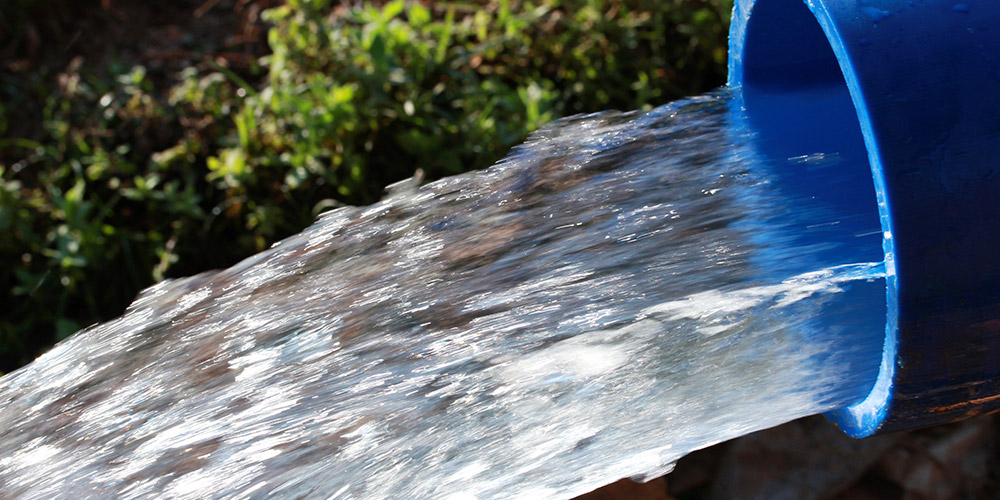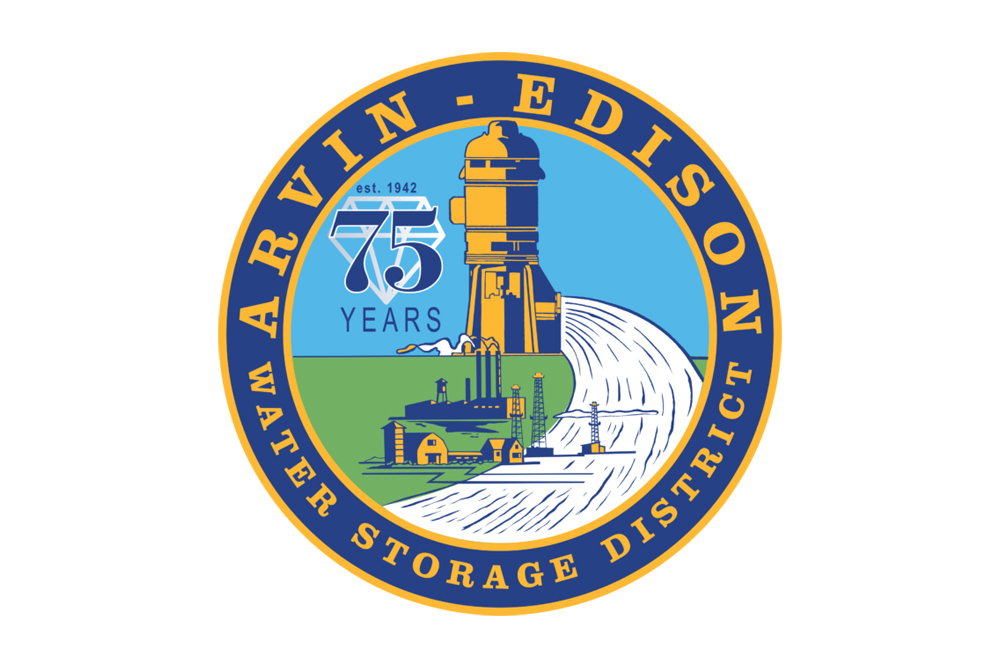 The Tulare Irrigation District held its board of directors meeting on Tuesday, June 8, 2021 remotely on Zoom from its headquarters. TID under General Manager Aaron Fukuda has been more proactive with technical issues. Fukuda and his board have been more willing to readily adopt improved cameras and audio to the boardroom. They’ve got a new view of the boardroom that works very well. I can see the directors and staff and pretty much tell who’s talking. Good for them.
The Tulare Irrigation District held its board of directors meeting on Tuesday, June 8, 2021 remotely on Zoom from its headquarters. TID under General Manager Aaron Fukuda has been more proactive with technical issues. Fukuda and his board have been more willing to readily adopt improved cameras and audio to the boardroom. They’ve got a new view of the boardroom that works very well. I can see the directors and staff and pretty much tell who’s talking. Good for them.
The Meeting
Chairman David Bixler called the meeting at 9:00am and Friant Water Authority’s Chief Operations officer Doug DeFlitch gave the board an update on the Friant Kern Canal repairs. He said State Senator Melissa Hurtado’s SB 559 has been expanded to include not just the FKC but also the California Aqueduct and the Delta Mendota Canal and split the money three ways. DeFlitch said the equation will always require a local cost share. The plan is to have federal, state and local funding. We hear about the $500 million subsidence repair but there are other problems on the canal. It’s estimated to get the entire canal back to design capacity will take closer to $900 million, (maybe $1 billion but no one likes to use the b word.) Fukuda said Friant’s staff including Johnny Amaral, have made great effort to help secure federal funding.
DeFlitch gave a water operations report saying there is still a 20 percent Class I allocation and that’s holding. He said Friant is keeping a close eye on the 600,000 a/f Exchange Contractors’ dry year supply. He said as long as that one pump at the Delta keeps the trickle going the call on San Joaquin River water is one day further away. I asked him if there was a date where folks could breathe easier but much like our friends at AA, it’s one day at a time.
Fukuda also introduced Debbie Xxx the district’s new Xxx to the board in person. He said XXX came on part time and got all the work they threw at her complete so they hired her full time so they can throw more work at her.
Water Report
Water Master Marco Crenshaw gave the water report and he said it’s all low. Millerton Lake has about 260,000 a/f and it’s dropping faster than it’s filling. There are records being set. The Kaweah River runoff is the lowest ever recorded for this time of year. Crenshaw said now that he’s gotten the good news out of the way. . . There’s just not much water out there and trades, swaps, exchanges are not really happening. There just isn’t enough water to attract even great deals. There are sales out there at $1,700 per a/f but you can’t sell what you don’t have. Fukuda said this is trending to repeat 1977 and 2014 which were very dry years. However, this year even without a run the district is able to bring in some water. Running water through a district canal system can still provide recharge. I guess recharge far exceeds evaporation.
what you don’t have. Fukuda said this is trending to repeat 1977 and 2014 which were very dry years. However, this year even without a run the district is able to bring in some water. Running water through a district canal system can still provide recharge. I guess recharge far exceeds evaporation.
O&M
Superintendent Wayne Fox gave an update on what the TID crews have been up to. There have been a good deal of work going on as the dry conditions allow access to just about everything. On a side note it was said – let me see if I can get this right – the crew heard the sheriff’s sirens and there’s an app that allow users to follow pursuits. They saw two suspicious men wandering through a field where they shouldn’t have been. They were able to call the sheriffs and assist in having some home burglars arrested. Good for them. Maybe we should be deputizing ditch tenders. Director Mike Thomas was pleased with justice being served of course, but he was also pleased that TID staff have been able to work on water projects that will help in the future.
Financials
Controller Kathi Artis gave her report and TID is hanging in there. The board approved the report and agreed to pay its bills. One of them was a new Ford F150, good for them. One of a Friant Division contractors big bill is San Luis Delta Mendota Water Authority O&M expenses. I think it was Director Dave Martin who said Friant is better or perhaps kinder than SLDM about refunds.
High speed rail was also mentioned. This out of control project is costing everyone in wasted money. Fukuda said the railroad rodeo of HSR claims excessive rights to outrageous matters. The HSR has been trying to push things through based on 1880s law. HSR has a 100 feet right of way that is divided down the center of the track but it is trying to claim 100 feet on both sides of the track. When challenged they get quiet. I know HSR was trying to claim the districts were financially responsible for altering of canals where the tracks passed over. Many of these canals have title owned by the US Bureau of Reclamation and once HSR was told to talk to the Bureau they were never heard from again. Anyway, for the cost of five miles of HSR the Friant Canal repairs could be paid for. Now, I ask you which benefits the people of California more – a functional canal that serves the multi-billion dollar economy or a fast train from Merced to Bakersfield that no one wants. That HSR money could address the woeful state of Highway 99, fix all the canals and replumb the state’s water infrastructure with change left over. It’s a disgrace, it is most likely unlawful as for how the voter approved bonds were written and it needs to stop.
passed over. Many of these canals have title owned by the US Bureau of Reclamation and once HSR was told to talk to the Bureau they were never heard from again. Anyway, for the cost of five miles of HSR the Friant Canal repairs could be paid for. Now, I ask you which benefits the people of California more – a functional canal that serves the multi-billion dollar economy or a fast train from Merced to Bakersfield that no one wants. That HSR money could address the woeful state of Highway 99, fix all the canals and replumb the state’s water infrastructure with change left over. It’s a disgrace, it is most likely unlawful as for how the voter approved bonds were written and it needs to stop.
Engineering
TID Engineer Jeremy Barroll was happy to report the TTEM is up and running. I forget what TTEM stands for but it is a towed array of electric magnets and sensors that allows a look at what’s going on underground. A similar project was done using helicopters within the last year. The operation was described, and it works better to have one person drive the utility vehicle and another one to keep an eye on the towed equipment, it doesn’t turn on a dime and you have to keep a constant speed of about six or seven miles an hour. There’s a sley that sends out a pulse and behind that a sensor. You run it up and down rows to map the underground. Someone suggested using an electric vehicle and Martin said he had his gas powered utility vehicle stolen and his neighbor loaned him his electric model and it wouldn’t last a day. Barroll said a team of horse or oxen may be tried.
Barroll also updated the board on a Kaweah Subbasin Water Marketing strategy. He and Fukuda sat through three “excellent” presentations from consultants. They’re not naming names of who is the front runner but a committee will make a decision to pass to the TID board for the ultimate decision. Martin expressed the need be sure there are no loopholes someone from out of the area with more lawyers, guns and money could use. Fukuda said this is a recognized concern and most likely the market will only allow grower to grower within the district or subbasin or whichever area is authorized transfers to keep the water within the boundaries.
ET Phone Home
Next Joel Kimmelshue, wheel hoss of Land IQ gave a presentation on how to monitor water use by satellite. Fukuda said the Kaweah Subbasin GSP was developed using the Davids Engineering model but the gentleman who came up with this model passed away and the numbers aren’t jiving. Land IQ has been able to show it can provide accurate data using satellite and ground truthing.
Kimmelshue posted his presentation saying Land IQ provides statewide crop mapping for DWR. He said consumptive use and other measurements can be provided. He started with a partner in 2007 and now has more than 30 employees. There are land scientists with agronomic skills and there are scientists who know how to work with satellites. So, they have a pretty complete skill set. There is 9.55 million acres of ag and 4.6 million acres of urban land. There is also .57 million acres of managed wetlands. Interesting how big urban’s footprint is.
Land IQ keeps an up to date map of field boundaries, that’s the irrigated footprint. That’s why the accuracy is 97.6 percent. They drive 15,000 miles a year of checking the crop type. This ground truthing data covers 98 percent of the crops grown in California. That’s how Land IQ gets its data for evapotranspiration monitoring.
Kimmelshue put up a map showing where Land IQ is monitoring and most of the GSA surrounding TID is using Land IQ. Semitropic Water Storage District is using ET as a basis for its pumping estimates. There are experienced UC Cooperative Extension Agents and Farm Advisors reviewing Land IQ’s operations on a monthly basis. There are also other serious scientists on the advisory board to help keep things between the lines. Kimmelshue says there are extensive calibration measurements to ensure the most accuracy. He said if there are clouds or smoke you can’t get satellite data but Land IQ has a vast ground truthing network to rely on. There are more than 100 stations in the San Joaquin Valley with 88 of them in the South Valley. They have stations on native and fallowed areas.
Kimmelshue said they care about jurisdictional boundaries for reporting but the data doesn’t stop at a man made line. Analysis by crop type can be used in a number of ways from monitoring to marketing. Public rain gauges are used but Land IQ has a denser precipitation monitoring system. They also determine water usage based on the age of a crop such as a new orchard won’t use as much water as a mature, producing orchard and including it as a variable in the estimates. He also showed how the data is presented to the end users. The data belongs to the client and can be produced as the client wants, maps, charts, etc.
crop such as a new orchard won’t use as much water as a mature, producing orchard and including it as a variable in the estimates. He also showed how the data is presented to the end users. The data belongs to the client and can be produced as the client wants, maps, charts, etc.
Martin said he sits on the Mid Kaweah GSA and he likes the satellite approach. He said he has a friend in Pixley who grew dryland wheat and won’t be planting anything or discing under the stubble as he doesn’t want to raise the ET by disking. Kimmelshue said field management can impact the ET. The disked dirt would dry out and register the evaporation. It’s not much water but every drop matters. Kimmelshue said a cover crop impacts orchards ET. Director Rick Borges said that some USDA grants like EQIP wants cover crops. Fukuda said there are folks who can manage this at the GSA and there are funds budgeted. Borges said the Kaweah Subbasin is using Hotspot AG for monitoring and there could be a great interaction with Land IQ. I was thinking that also, glad to see it was mentioned.
Kimmelshue said a cover crop impacts orchards ET. Director Rick Borges said that some USDA grants like EQIP wants cover crops. Fukuda said there are folks who can manage this at the GSA and there are funds budgeted. Borges said the Kaweah Subbasin is using Hotspot AG for monitoring and there could be a great interaction with Land IQ. I was thinking that also, glad to see it was mentioned.
Thomas asked how Land IQ can tell between when his trees are dry and when he’s just irrigated. Kimmelshue said they ground truth every 15-minutes if I understood correctly. The ended Kimmelshue’s presentation.
Thomas asked how the data can be used. Fukuda said it can be developed to measure pumping. He said the data can help growers to shore up poor irrigation practices. Martin said in general the area has to start now in gathering its irrigation data and improving the culture of irrigation in the Valley. He said once Mid Kaweah goes with Land IQ everyone has the same data set in the subbasin. He said you have to manage on groundwater elevation not allocation. If levels drop so will allocations, it’s not a chicken and the egg scenario.
Unnamed Asian Virus
Fukuda said there are more than one set of rules dealing with the virus. Newsom keeps changing his stance and Cal OHSA is coming up with its regulatory set. Fukuda said he’s spoken with the human resources attorney who strongly suggested TID stay on its current virus plan until the rest of the state catches up.
SGMA
Fukuda said the Mid Kaweah GSA is looking at policies of ramping down pumping. He said those numbers are not ready yet and he’s not going to mention out loud any figure until it’s firm. Thomas said who enforces this? No one knows at the moment. Borges said TID has to think through this very carefully as every grower out there can come up with 10 more questions that have yet to be asked.
Fukuda said no matter how onerous the GSP pumping may be if the right number can’t be arrived at the State Board will step in and all the pumping could be cut off until the desired results come together. The City of Tulare was mentioned as an over pumper. There’s no hammer to enforce a city to comply, at least not until some confirming data is assembled. Fukuda made a case that dairies are just as much a permanent crop as almonds. There is however, a wider variety of water usage on dairies and that needs to be figured out.
arrived at the State Board will step in and all the pumping could be cut off until the desired results come together. The City of Tulare was mentioned as an over pumper. There’s no hammer to enforce a city to comply, at least not until some confirming data is assembled. Fukuda made a case that dairies are just as much a permanent crop as almonds. There is however, a wider variety of water usage on dairies and that needs to be figured out.
Fukuda said there will be a call of funds for the Mid Kaweah GSA at that meeting this afternoon. There is a management action list being developed that will allow new projects to be added to the mix. He said DWR has released four GSP assessments, two approved and two needing more work. I don’t recall the third but one was from the Santa Cruz area, one in Cuyama west of Bakersfield and one in Paso Robles. Cuyama and Paso Robles didn’t make the cut. However both Provost & Pritchard and Montgomery & Associates worked on both of those GSPs. Those firms also have done work on the MKGSA so there is a good connection of what needs to be done if there are any changes needed. Fukuda said DWR has been “stellar” in keeping its word. Good for them. Fukuda said he attended Cal Poly and said the wineries have really changed everything over there. The land range with cattle and there isn’t much in the way of surface water, streams and such. It’s pumping now as an irrigation source and that’s got the old ag pitted against the winos.
Friant Matters
Fukuda reported the FWA has approved a new accounting position in anticipation of the extra work of the canal repairs. Borges is TID’s FWA representative and said even after this portion of the canal is repaired there are other tasks that need help. Also there are folks retiring and it’s better to get some inhouse training in advance.
Fukuda said the new FWA Chief Financial Officer Wilson Orvis is working out well. He said Orvis has implemented new procedures that have made his life easier. Borges agreed Orvis has hit the ground running and he hopes Orvis will become a permanent part of Friant.
Gov’t Stuff
Fukuda said there is some surplus tax money, actually quite a bit in the billions of dollars. What do we do with extra money in Sacramento? We pay down existing debt. Just kidding, we spend it like crazy. The silver lining is there could be money for land acquisition for recharge. This I believe is part of the gov’s budget.
I don’t know exactly how, but Ann Hayden of Environmental Defense Fund got praised to no end. Actually I know why she was praised, she’s really good at communicating, but not how the subject came up. The board was unanimous in its assessment that Hayden gets it. Good for her.
Action Items
James Fisher has been hired by TID and he made his first board presentation I’m aware of. He went over what a contract with Land IQ would entail. It will cost $51,000 per year for three years or about $.76 per acre. Fukuda said this cost has dropped as more land area is represented, so there is possibility of it getting cheaper although there is no guarantee this will happen. The audio cut out here. Then Fukuda said there is a free, open ET coming out this year but there is no ground truthing with it. The board spoke about the benefits and possible pit falls. They like it. Fukuda said Kimmelshue is well known for his willingness to adapt to the needs of his clients. That’s a good thing to hear these days. Martin said since he’s been pounding the table he’ll make the motion and the board approved.
The Budget
Fukuda said the only water sales this year will be to I believe the City of Visalia. He went through a lot of budget items. They’re looking to spend about $2 million. Once again AT&T flubbed up its commitment to provide highspeed internet service to TID headquarters. A few years back AT&T screwed the pooch and once again they had a deal with Comcast. AT&T screwed Comcast and TID so it looks like the district will continue using its one man shop out of Corcoran who provides on the spot service and extremely competitive prices. Good for Jimmy the man from Corcoran, I never did hear his last name. By now it was 12:30pm. This meeting has been rolling down the tracks for three and a half hours with no signs of slowing down. I had some other pressing business to attend to and had to leave.
DISCLAIMER OF RESPONSIBILITY; Waterwrights strives to provide clients with the most complete, up-to-date, and accurate information available. Nevertheless, Waterwrights does not serve as a guarantor of the accuracy or completeness of the information provided, and specifically disclaims any and all responsibility for information that is not accurate, up-to-date, or complete. Waterwrights’ clients therefore rely on the accuracy, completeness and timeliness of information from Waterwrights entirely at their own risk. The opinions expressed in this report are those of the author and do not represent any advertisers or third parties.
ALL RIGHTS RESERVED. Copyright 2021 by WaterWrights.net/DAW
TULARE IRRIGATION DISTRICT
6826 Ave 240, Tulare, CA 93274 Office: 559/686-3425
Board: David G. Bixler- President, Richard S. Borges, Jr.-Vice President, Scott Rogers, Dave Martin & Michael Thomas
Staff: Aaron Fukuda-General Manager, Jeremy Barroll-Engineer, Kathi Artis–District Controller, Wayne Fox–Superintendent, Marco Crenshaw–District Watermaster & Alex Peltzer-Attorney.
About: The Tulare Irrigation District was organized September 21, 1889. The original proposal for the formation of an irrigation district covering 219,000 acres, extending from the Sierra Nevada foothills to Tulare Lake, was eventually reduced to 32,500 acres. The District continued in this status until January of 1948 when the so-called Kaweah Lands” (approximately 11,000 acres) were annexed. In October of 1948, approximately 31,000 acres, compromising the area served by the Packwood Canal Company were annexed to the District. A U.S. Bureau of Reclamation contract was signed in 1950 providing an annual supply of 30,000 acre-feet of Class 1 water, and up to 141,000 acre-feet of Class 2 water from the Friant-Kern Canal. The District and the Kaweah Delta Water Conservation District have coordinated efforts to enhance the recharge of groundwater within the Kaweah Basin. During high flow times KDWCD may use the recharge basins with the District for recharge purposes. Further, KDWCD has historically provided for a financial incentive program through which the District sustains the level of groundwater recharge from supply sources into the District. This historical program was recently reinstated by both districts in lieu of the District’s plans to concrete-line this canal to conserve the surface water. TID is a member of the Mid Kaweah GSA.
































